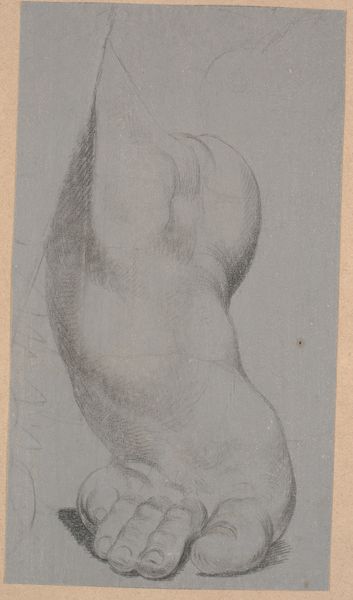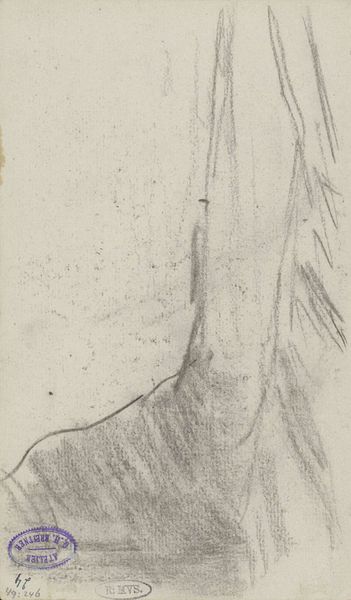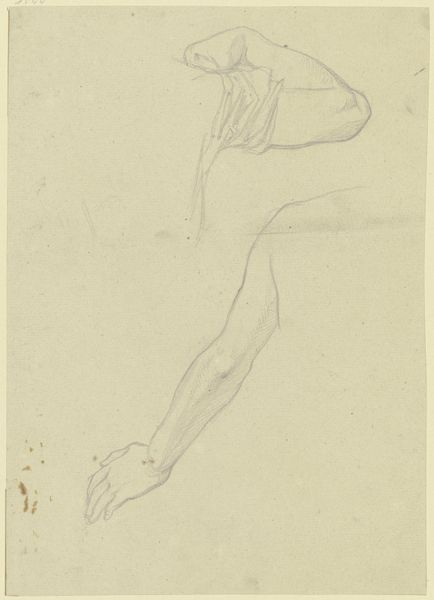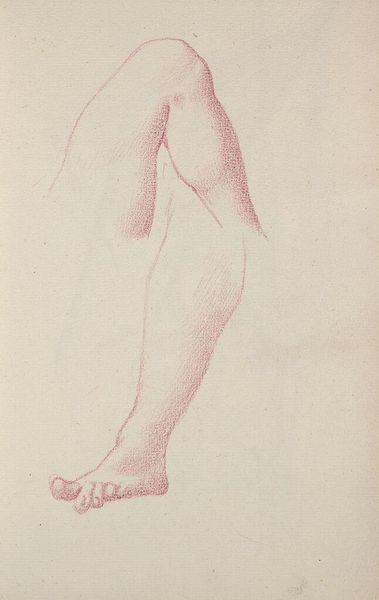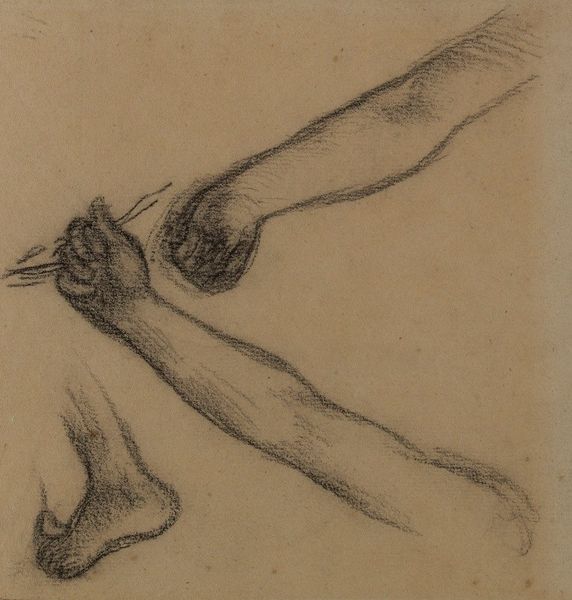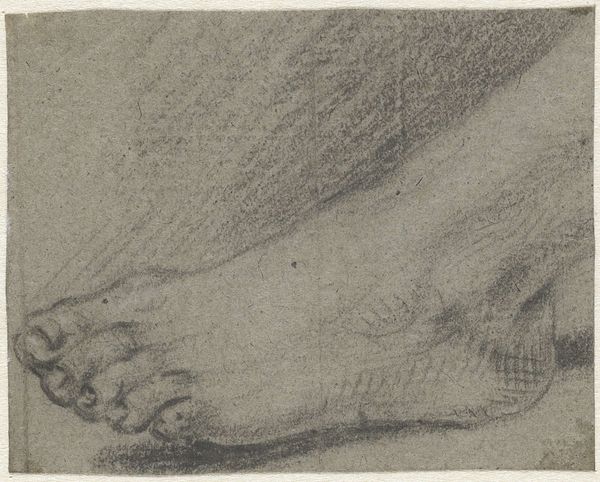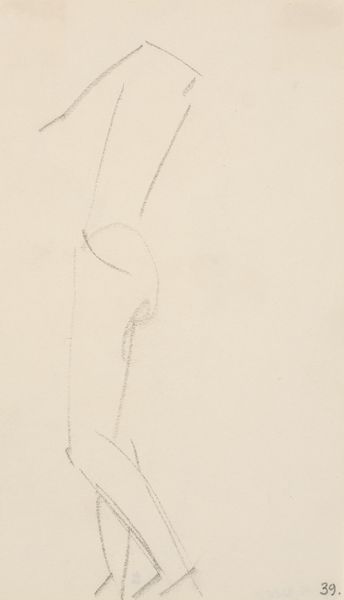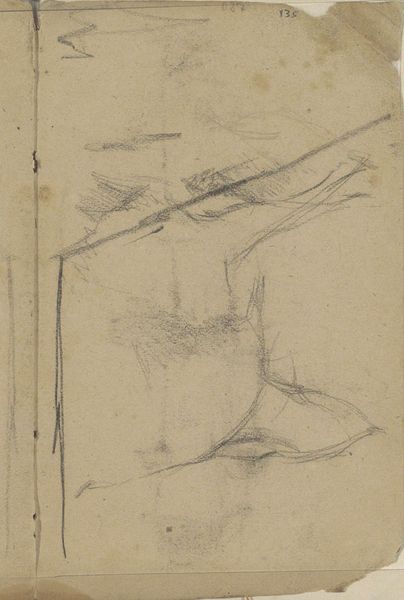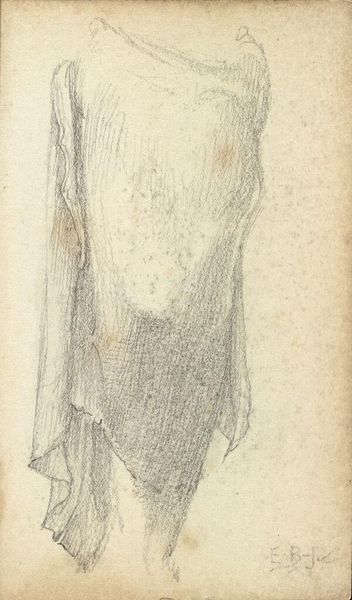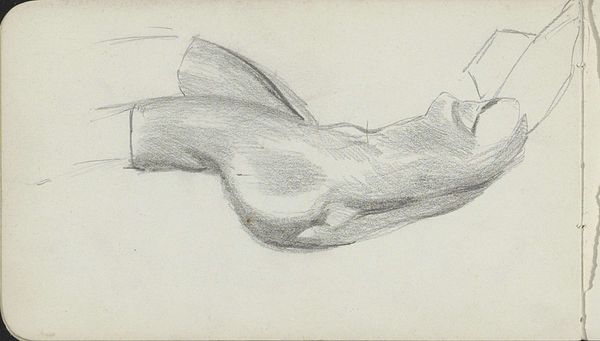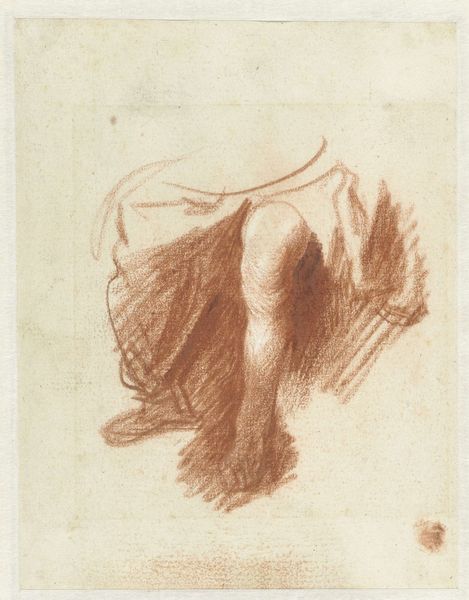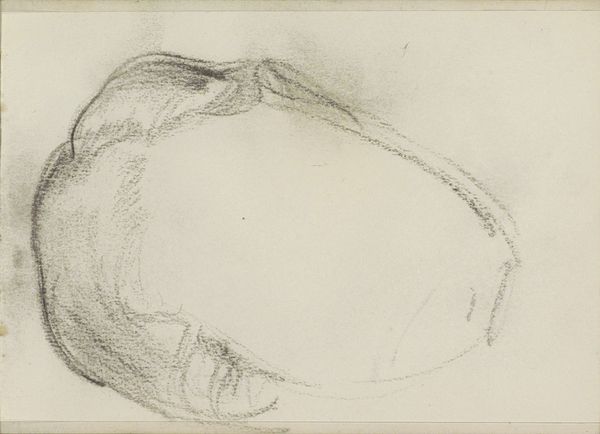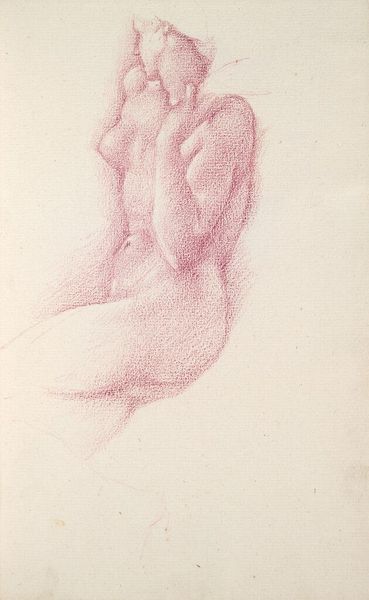
drawing, pencil
#
drawing
#
dutch-golden-age
#
landscape
#
pencil
#
realism
Dimensions: height 196 mm, width 116 mm
Copyright: Rijks Museum: Open Domain
Editor: We're looking at "Studie," a pencil drawing from 1882 by George Hendrik Breitner, currently held in the Rijksmuseum. It has the look of a quickly sketched landscape, almost dreamlike in its simplicity. What do you see in this piece? Curator: This isn't just a landscape; it's a record of a specific moment, reflecting Breitner's radical embrace of realism and urban life. Remember, Breitner was documenting Amsterdam during a period of intense social and economic change. The looseness of the sketch isn't carelessness. It's a conscious choice to depict the fleeting, often harsh, realities of everyday life for marginalized communities. What do you think he might have been trying to capture with such immediacy? Editor: Maybe he wanted to show the temporary nature of their situation? That everything around them was also kind of unfinished and uncertain. Curator: Exactly. And that uncertainty isn't just aesthetic, is it? It mirrors the political instability of the era, the rise of industrialization, and its effects on people’s lives. Consider who typically owned and consumed landscape paintings at the time, and how Breitner subverts those expectations. Does that add a layer to your understanding of the artwork? Editor: It does! Knowing Breitner was making a conscious choice to depict the real world for a wider audience – beyond just wealthy patrons– shows how powerful his art was as social commentary. Curator: Precisely. So this seemingly simple sketch then becomes an act of resistance. He captured the unvarnished truth of a world on the brink. Editor: It’s amazing how much context transforms our understanding. Thanks for unpacking all that! Curator: My pleasure. It highlights art's intrinsic ability to comment on societal structure.
Comments
No comments
Be the first to comment and join the conversation on the ultimate creative platform.
